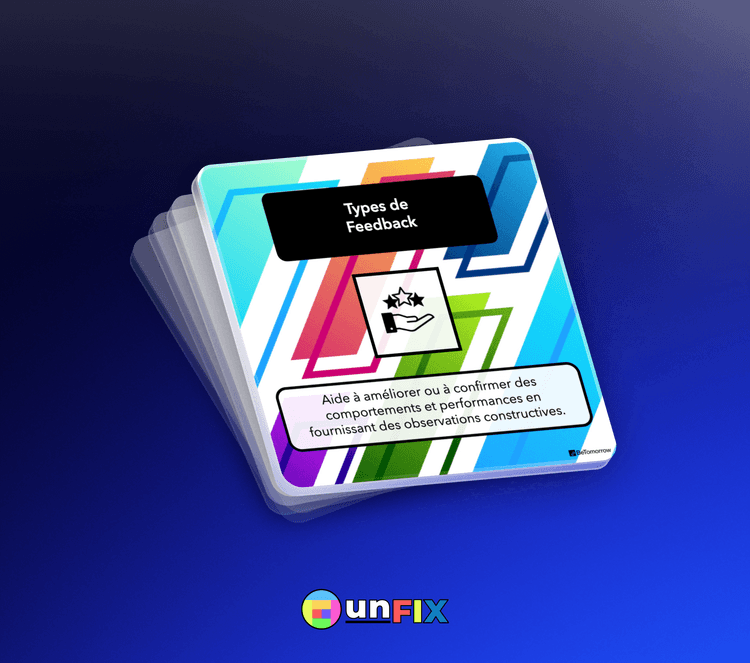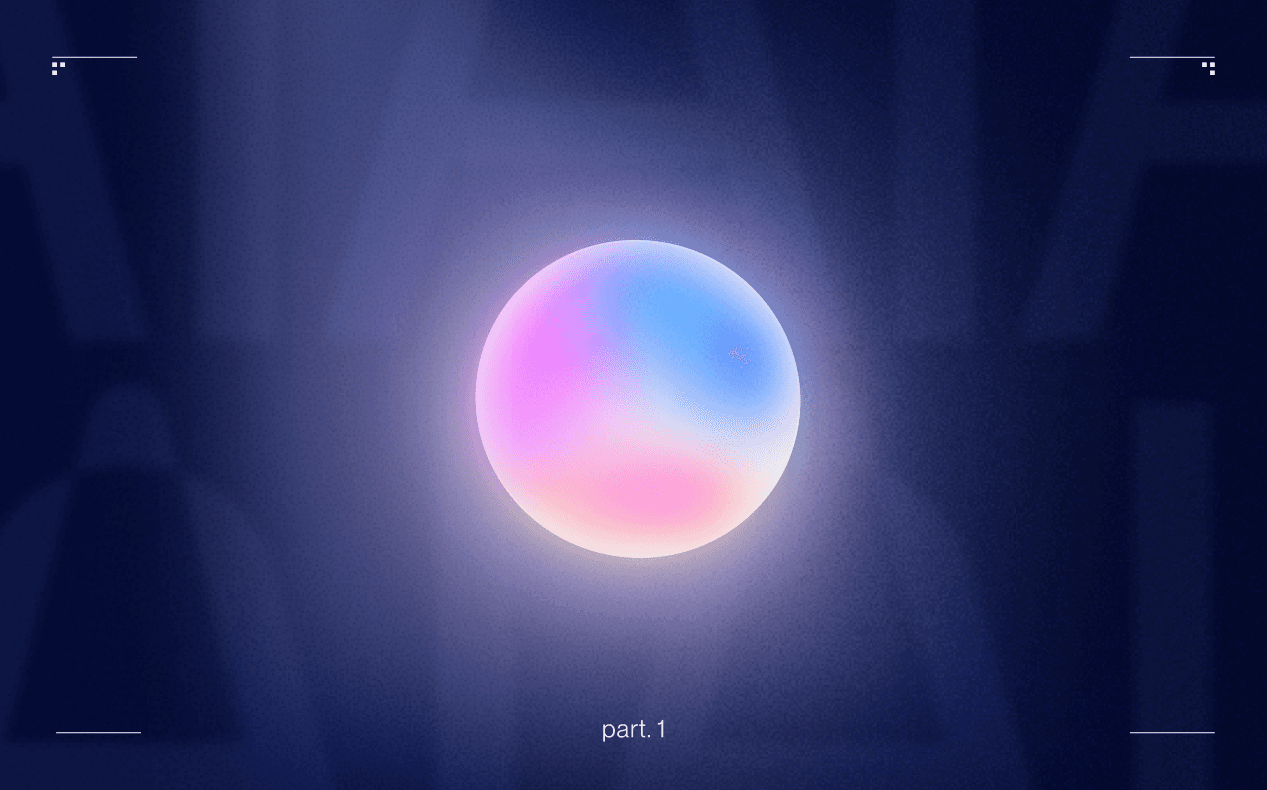Optimizing collaboration moments with unFIX : implementing feedback

Table of contents
Welcome to the second part of our series on utilizing feedback during collaborative moments according to the unFIX model.
After highlighting the various types of feedback and their fundamental importance in the first part, we now delve into the practical application of these tools during key collaborative moments. Every interaction provides an opportunity to strengthen our teamwork, foster innovation, and navigate challenges with agility and mutual understanding.
In this segment, we will specifically match types of feedback to eight collaborative moments. Get ready to enrich your feedback compass with practical guidance and discover how each type of feedback can enhance the quality of our professional exchanges!
To find part 1 of the article: Optimizing collaboration moments with unFIX: the different types of feedback
To read part 3 of the article: Optimizing collaboration moments with unFIX : feedback as a power driver!
The Presentation Session

For a Presentation Session, also known as a "kick-off meeting" or "initial interview", participants get to know each other and prepare to collaborate. Appreciative Feedback (AAA: Appreciation, Amplification, Adjustment) is most suitable for this type of meeting.
Why is Appreciative Feedback ideal for a Presentation Session?
This is the perfect time to start building positive relationships. Expressing sincere appreciation for the skills, experiences, or perspectives each person brings can help establish a foundation of mutual respect and trust.
Encouraging participants to share more about what they can contribute to the project or team can not only reinforce their sense of belonging but also uncover valuable resources and skills that might otherwise go unnoticed.
Although adjustment in this context is usually minimal, it can involve encouraging participants to reflect on how they can better contribute to the group dynamic or adapt to the project's needs. This sets the stage for flexible and responsive collaboration.
The Team Building Session

For a Team Building Session, where the goal is to enhance collaboration through team-building exercises, both constructive feedback and elements of appreciative feedback (AAA) are particularly suitable.
Why are these types of feedback ideal for a Team Building Session?
While all appreciative feedback is constructive by nature, particularly in encouraging and valuing positive behaviors, constructive feedback can go further by suggesting specific adjustments and improvements.
Constructive Feedback: these sessions often aim to identify and overcome barriers to effective collaboration. Constructive feedback, focused on improvement and growth, can help team members understand how their actions affect the group and identify ways to enhance their contribution to the team dynamic.
Appreciative Feedback (AAA): recognizing and valuing each member's positive contributions and strengths enhances team cohesion and motivation. This also encourages behaviors that foster good collaboration.
The Exploration Session

For an Exploration Session, where participants delve into the context, stakeholders, problems, solutions, and/or processes—also known as information gathering sessions, value stream mapping, or design workshops—SBI Feedback (Situation-Behavior-Impact) is appropriate.
Why is SBI Feedback ideal for an Exploration Session?
This choice is justified by the exploratory and analytical nature of these sessions, where precise understanding and clear observations are crucial. SBI Feedback helps articulate feedback based on observable facts and their impacts, essential for guiding adjustments and improvements in an exploration process.
Starting by describing the situation ensures that the feedback is relevant and grounded in the reality of what was explored during the session. Next, identifying specific actions or contributions (behavior) during the session helps recognize useful efforts and pinpoint areas where adjustments might be beneficial.
Finally, discussing the impact of actions on the session helps understand the value of different contributions and guide the next steps.
The Strategic Session

A Strategic Session involves participants evaluating options in their context and making tactical decisions together. Often referred to as "strategic review," "strategy update," or "quarterly off-site seminar," 360-degree feedback, constructive feedback, and DESC feedback are particularly appropriate.
Why are 360-degree Feedback and Constructive Feedback ideal for a Strategic Session?
These types of feedback facilitate a comprehensive and nuanced evaluation of strategic decisions, taking into account multiple perspectives and encouraging open dialogue about strengths, weaknesses, and opportunities for improvement.
360-degree Feedback: Provides a global perspective, integrating feedback from various levels and functions within the organization. This ensures that strategic decisions are informed by a full understanding of potential impacts across the company.
Constructive Feedback: Encourages open discussion about what works well and what could be improved in the proposed strategies. It helps identify specific actions to optimize the strategic approach while maintaining a positive and growth-oriented framework.
DESC Feedback: Particularly useful for expressing concerns or appreciations in a structured way, clarifying the impacts of strategic decisions on the organization or stakeholders.
The Planning Session

During a Planning Session, participants assess the tasks to be completed, establish priorities, and determine the action schedule. Also known as "sprint planning," "PI planning" (Program Increment), "replenishment meeting," or "project planning meeting," Tactical Feedback and SBI Feedback (Situation-Behavior-Impact) are particularly well-suited.
Why are Tactical Feedback and SBI Feedback ideal for a Planning Session?
These types of feedback provide clear and specific guidance, crucial for adjusting and refining the action plan in response to the project's needs and priorities.
Tactical Feedback: Focuses on specific actions or decisions made during the planning session. It offers precise advice on optimizing resources, adjusting deadlines, or reprioritizing tasks to meet project objectives more effectively.
SBI Feedback (Situation-Behavior-Impact): Addresses specific situations observed during the session, the behavior or actions taken, and their impact on the overall plan. This helps clarify why certain decisions were made and what effect they might have on the project's progress.
The Synchronization Session

During a Synchronization Session, participants update each other on their achievements, current tasks, areas where they need help, and ensure they are aligned with the planned schedule. Also called "StandUp Meeting" or "Daily Scrum," a combination of Appreciative Feedback (AAA: Appreciation, Amplification, Adjustment) and Tactical Feedback can be particularly effective.
Why are Appreciative Feedback and Tactical Feedback ideal for a Synchronization Session?
These types of feedback promote a spirit of recognition and encouragement while providing targeted advice for continuous improvement.
Appreciative Feedback (AAA): values each person's contributions and efforts, boosting motivation and confidence within the team. It creates a positive atmosphere that encourages open sharing and supports team members' engagement with their tasks and goals.
Tactical Feedback: offers specific and practical guidance for adjusting action plans or solving daily problems. This helps keep the team aligned and focused on priorities while facilitating proactive management and resolution of obstacles.
The Tactical Session

During a Tactical Session, participants gather to make decisions at a tactical level. Also called "tactical meeting," "project update," "portfolio review," "status update meeting," or "weekly team meeting," Tactical Feedback and SBI Feedback (Situation-Behavior-Impact) are particularly suitable.
Why are Tactical Feedback and SBI Feedback ideal for a Tactical Session?
These sessions aim to resolve specific issues, adjust action plans, and ensure ongoing initiatives are on track, requiring targeted and actionable feedback.
Tactical Feedback: provides precise and immediately applicable guidance, essential for quickly adjusting tactics and short-term strategies. It helps clarify the specific actions needed to move effectively toward defined goals.
SBI Feedback (Situation-Behavior-Impact): offers a structured framework for discussing observed behaviors, their contexts, and their consequences, facilitating a clear understanding of the effectiveness of actions taken and their impacts on project goals. This helps teams identify successes to replicate and mistakes to avoid.
The Verification Session

During a Verification Session, participants review the value created or lessons learned so far and evaluate this with stakeholders. Also called "service delivery review," "sprint review," or "system demo," a combination of Constructive Feedback, Appreciative Feedback (AAA: Appreciation, Amplification, Adjustment), 360-degree feedback, or the Perfection Game is appropriate.
Why are Constructive, Appreciative, or 360-degree Feedback ideal for a Verification Session?
These types of feedback encourage the recognition of successes and efforts while constructively identifying areas for improvement.
Constructive Feedback: Addresses identified areas for improvement during the review, providing specific suggestions to optimize value creation or enhance learning. It encourages a solution-oriented approach aimed at improving future performance.
Appreciative Feedback (AAA): Recognizes and values positive contributions, successes, and progress made. This reinforces the motivation and confidence of teams and individuals, highlighting the importance of their work and its impact on the project.
360-degree Feedback: Provides a global perspective, integrating feedback from various colleagues, clients, and partners. This ensures that annual reviews, for example, are informed by a comprehensive and transparent evaluation.
Perfection Game: Helps focus on what worked well and what could be improved, providing precise and actionable feedback for future iterations.

Why cultivate a feedback culture ?
Cultivating a feedback culture brings a wave of change in organizational communication. It promotes horizontal exchange where everyone is encouraged to share their needs, thus boosting workplace well-being and organizational innovation. This openness helps build mutual trust and self-esteem.
Advantages of giving feedback:
Expressing feelings and concerns brings personal relief.
Encourages reflection on work methods and consideration of improvements (e.g., thinking "I could have clarified my expectations and deadlines").
Promotes mature and equal communication, avoiding parent-child dynamics.
Provides personal satisfaction, especially when sharing positive feedback.
Benefits of receiving feedback:
Discover new perspectives on yourself, identifying strengths and areas for development.
Encourages positive reciprocity: a colleague's kind communication encourages you to do the same.
Receiving positive recognition and encouragement.
Conclusion
In this second part of the unFIX Collaboration Moments series, we explored how specific feedback approaches can transform these key interactions into opportunities for learning, innovation, and team-building. From the presentation session to the verification session, each moment offers an opportunity to apply feedback in ways that encourage growth, understanding, and collective efficiency.
We have seen that the choice of feedback type—whether appreciative, constructive, SBI-based, or otherwise—can influence the outcome of collaborative moments, making them more fruitful and enriching for all participants. The ultimate goal is to cultivate a feedback culture where open and positive communication allows everyone to thrive and contribute to their fullest potential.
In the third and final part of this series, we will explore more unFIX Collaboration Moments and how feedback can act as a catalyst for continuous improvement and innovation. Stay tuned to continue your journey towards mastering the art of feedback in collaborative settings.
Additional Resources
unFIX France LinkedIn Group : https://www.linkedin.com/groups/12993577/
unFIX France Meetup Group : https://www.meetup.com/fr-FR/unfix-france/
unFIX Community : https://community.unfix.com/
Thank you for reading this article.


